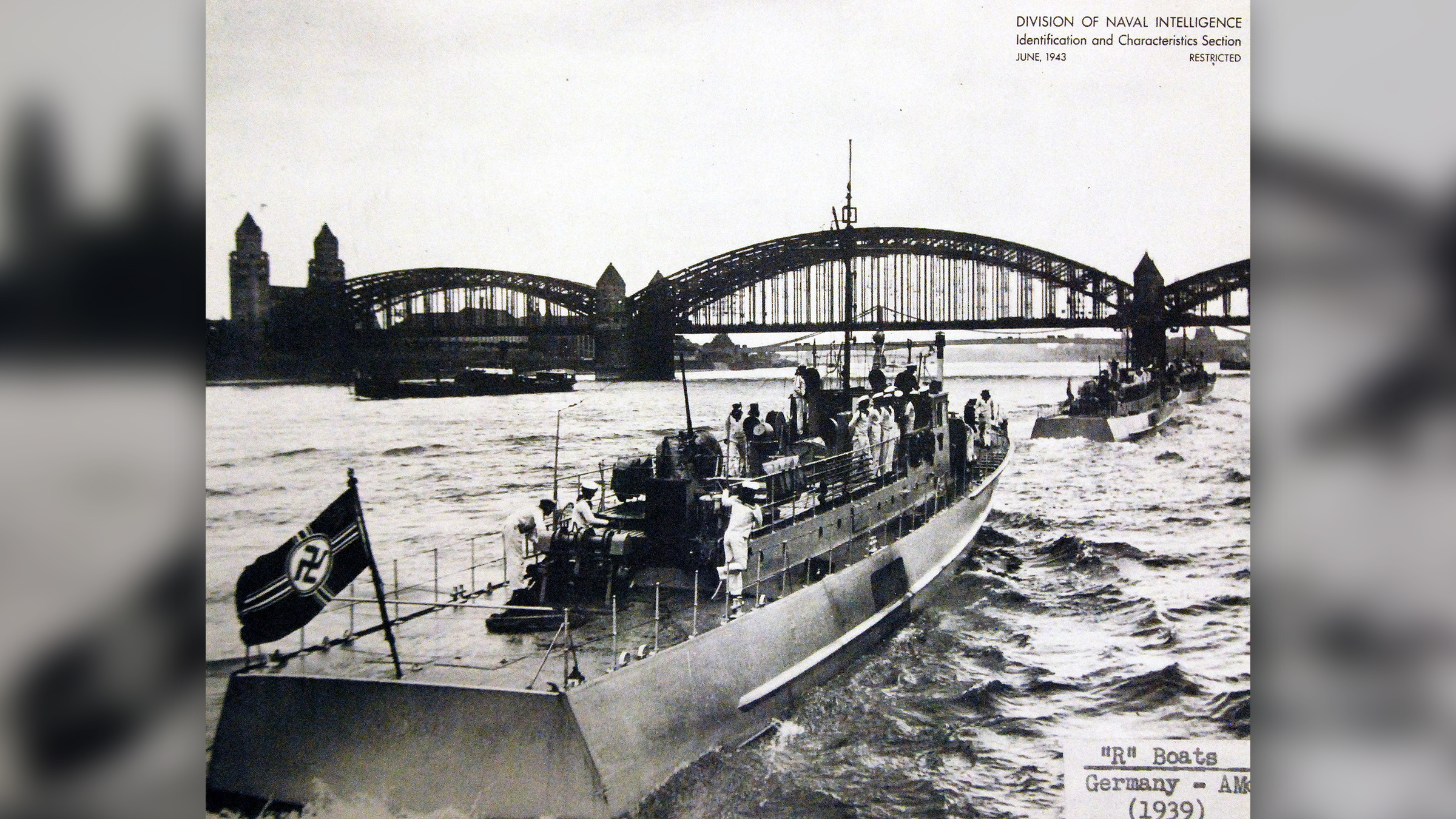Nazi warships revealed as Danube River levels drop
The Nazis deliberately sank the warships in 1944.

Falling water levels in the Danube River during a recent heat wave across Europe have revealed more wrecks from a Nazi German flotilla of warships that were deliberately sunk there in the last months of World War II.
The wrecks of about 20 warships are now exposed near the town of Prahovo in eastern Serbia, which is one of the 10 countries the Danube flows through between western Germany and the Black Sea, according to the news agency Reuters.
Many of the wrecks still contain tons of unexploded ammunition that endanger local fishers, river traffic and wildlife, and Serbia's government has plans to remove them. As the water levels drop, however, the potentially explosive war wrecks pose an even greater danger than usual. Some now display turrets, command bridges, broken masts and twisted hulls above the falling water levels, according to Reuters, while others are mostly submerged under sandbanks.
Related: Lake Mead dwindles, and a WWII-era 'swamp boat' emerges
"The German flotilla has left behind a big ecological disaster that threatens us, [the] people of Prahovo," said local historian Velimir Trajilovic, according to Reuters.
The water levels of the Danube and many other major rivers in Europe have fallen during months of high temperatures and lower-than-usual rainfall; in Serbia, authorities have started using dredges (floating grab cranes that can deepen the riverbed) to keep a navigable channel in the Danube open to river traffic. But the wrecks have reduced the width of the channel at Prahovo to just 330 feet (100 meters), instead of the usual 600 feet (180 m).
In Photos: The Danube has dropped to one of its lowest levels in almost a century, exposing the wrecks of Nazi warships, which now endanger trade and fishermen. https://t.co/vopMsberDqAugust 22, 2022
Black Sea fleet
Up to 200 warships from the German fleet in the Black Sea were deliberately scuttled in the Danube near Prahovo toward the end of 1944, on the orders of its commander, Rear Adm. Paul-Willy Zieb of the Kriegsmarine, Germany's navy from 1935 to 1945.
Sign up for the Live Science daily newsletter now
Get the world’s most fascinating discoveries delivered straight to your inbox.
Zieb led a convoy of warships, soldiers and civilians from the Black Sea regions up the Danube as they retreated from the Soviet military advancing through Romania after August 1944, according to the German newspaper Der Tagesspiegel.
But "Battlegroup Zieb" came under heavy fire from the Soviet-held shore on the north, and after a failed attempt to reach German territory by fighting through the gorge known as the "Iron Gate" about 20 miles (30 kilometers) upstream, Zieb ordered the warships to be scuttled at Prahovo at the end of September 1944. He also ordered the personnel to make their way on foot to Belgrade, Serbia's capital city, which was controlled at that time by the German military.
Zieb's idea was to deliberately sink the German warships in zigzag lines that would at least slow the Soviet advance. But it didn't help, and Nazi Germany surrendered to the Soviets and Allies in May 1945.
The result of the mass scuttling near Prahovo has been to create a dangerous obstruction to boats on the Danube that is most exposed when the level of the river falls every summer. Some of the wrecks were cleared away after the end of the war, but most of them are still there. This year, Serbia's government proposed a $30 million operation to remove them, Reuters reported.
Falling waters
Europe has experienced heat waves in recent summers, according to the state-owned German broadcaster Deutsche Welle, which has exacerbated the low water levels in major rivers such as the Danube — but that's not a new problem.
Related: Hidden ancient Roman 'Bridge of Nero' emerges from the Tiber during severe drought
The International Commission for the Protection of the Danube River notes that dams, reservoirs, irrigation networks, flood defenses and canals for boat navigation on the main stem of the Danube and its many tributaries all reduce the river's flow, and that hydropower dams and reservoirs are among the greatest threats.
The Danube was once a wide-branching river within an extensive regional network of tributaries and backwater, according to the environmental organization World Wide Fund for Nature (WWF). But more than 80% of the length of the Danube is now subject to government regulations, and more than 700 dams and weirs (fences or enclosures) have been built on the river's tributaries since the 19th century, the WWF reports.
More than 80 million people live in the Danube basin in southeastern Europe, and more than 20 million rely directly on the Danube for water.
But the Danube is now one of the 10 most threatened river systems in the world, where human interventions — especially during the rapid industrialization of the 19th and 20th centuries — have been devastating to wildlife and environmental concerns, such as flood protection and water management, according to the WWF.
Originally published on Live Science.
Tom Metcalfe is a freelance journalist and regular Live Science contributor who is based in London in the United Kingdom. Tom writes mainly about science, space, archaeology, the Earth and the oceans. He has also written for the BBC, NBC News, National Geographic, Scientific American, Air & Space, and many others.










